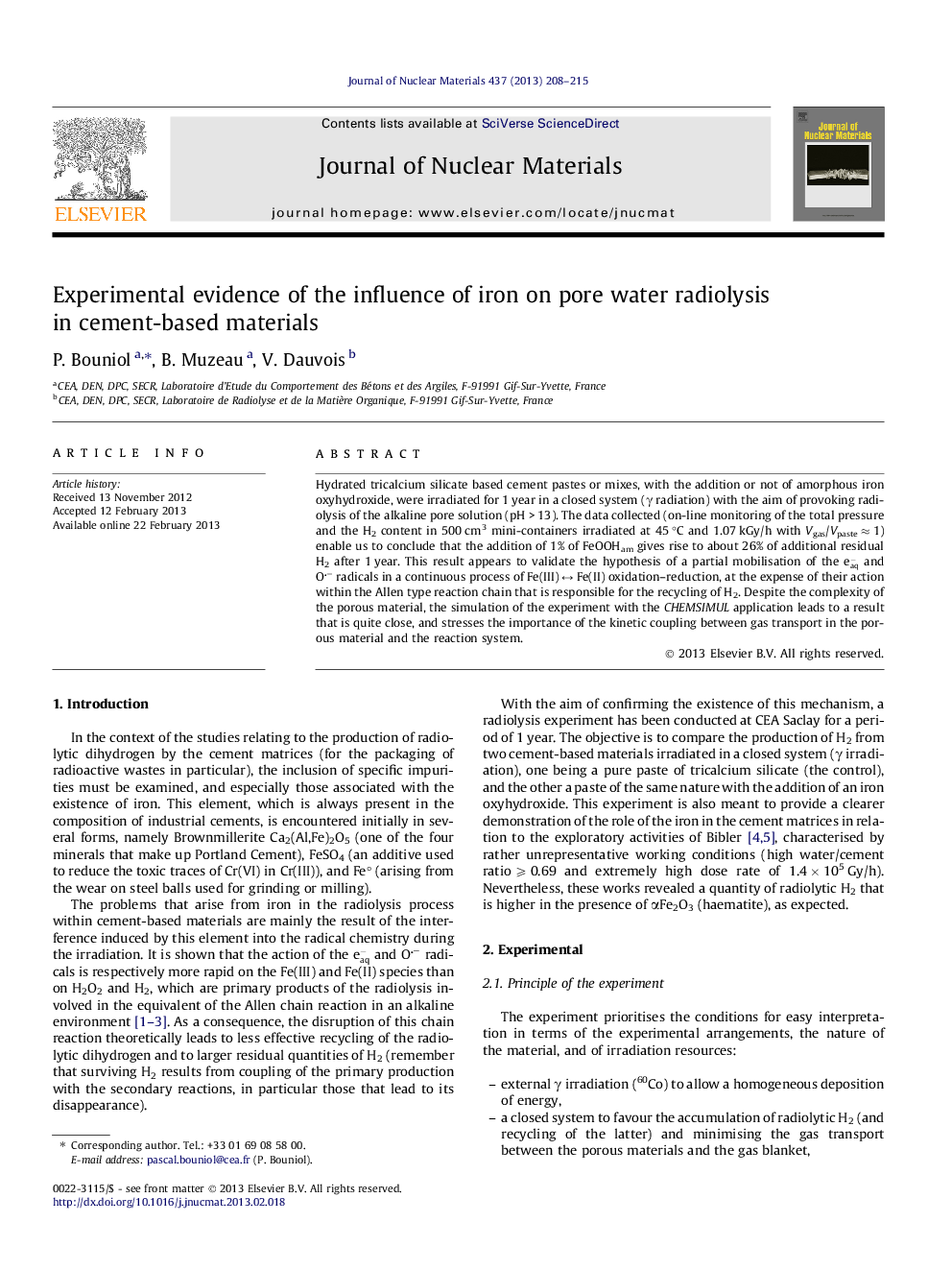| Article ID | Journal | Published Year | Pages | File Type |
|---|---|---|---|---|
| 1565790 | Journal of Nuclear Materials | 2013 | 8 Pages |
Hydrated tricalcium silicate based cement pastes or mixes, with the addition or not of amorphous iron oxyhydroxide, were irradiated for 1 year in a closed system (γ radiation) with the aim of provoking radiolysis of the alkaline pore solution (pH > 13). The data collected (on-line monitoring of the total pressure and the H2 content in 500 cm3 mini-containers irradiated at 45 °C and 1.07 kGy/h with Vgas/Vpaste ≈ 1) enable us to conclude that the addition of 1% of FeOOHam gives rise to about 26% of additional residual H2 after 1 year. This result appears to validate the hypothesis of a partial mobilisation of the eaq- and O− radicals in a continuous process of Fe(III) ↔ Fe(II) oxidation–reduction, at the expense of their action within the Allen type reaction chain that is responsible for the recycling of H2. Despite the complexity of the porous material, the simulation of the experiment with the CHEMSIMUL application leads to a result that is quite close, and stresses the importance of the kinetic coupling between gas transport in the porous material and the reaction system.
